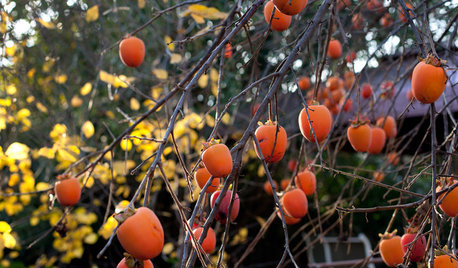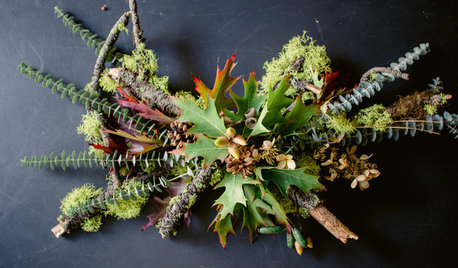Yates persimmons - can they be ripened off the tree?
mk_in_ohio
11 years ago
Featured Answer
Sort by:Oldest
Comments (109)
Tony
11 years agolast modified: 9 years agolucky_p
11 years agolast modified: 9 years agoRelated Professionals
Norfolk Landscape Architects & Landscape Designers · Deer Park Landscape Architects & Landscape Designers · Saint Louis Park Landscape Architects & Landscape Designers · Peabody Landscape Contractors · Beachwood Landscape Contractors · Brookfield Landscape Contractors · Brookline Landscape Contractors · Dedham Landscape Contractors · Edwardsville Landscape Contractors · El Segundo Landscape Contractors · Florham Park Landscape Contractors · Framingham Landscape Contractors · Franklin Landscape Contractors · San Carlos Park Landscape Contractors · Silver Firs Landscape Contractorsindicente
11 years agolast modified: 9 years agotreebird101
11 years agolast modified: 9 years agoTony
11 years agolast modified: 9 years agoharbin_gw
11 years agolast modified: 9 years agocreekweb
11 years agolast modified: 9 years agotreebird101
11 years agolast modified: 9 years agoindicente
11 years agolast modified: 9 years agotreebird101
11 years agolast modified: 9 years agoTony
11 years agolast modified: 9 years agotreebird101
11 years agolast modified: 9 years agoTony
11 years agolast modified: 9 years agotreebird101
11 years agolast modified: 9 years agoharbin_gw
11 years agolast modified: 9 years agotreebird101
11 years agolast modified: 9 years agotreebird101
11 years agolast modified: 9 years agobennylafleur
11 years agolast modified: 9 years agoharbin_gw
11 years agolast modified: 9 years agotreebird101
11 years agolast modified: 9 years agoTony
11 years agolast modified: 9 years agotreebird101
11 years agolast modified: 9 years agofruitcraz
11 years agolast modified: 9 years agoTony
11 years agolast modified: 9 years agoharbin_gw
11 years agolast modified: 9 years agotreebird101
11 years agolast modified: 9 years agotreebird101
11 years agolast modified: 9 years agoTony
11 years agolast modified: 9 years agoskyjs
11 years agolast modified: 9 years agoindicente
11 years agolast modified: 9 years agoskyjs
11 years agolast modified: 9 years agoindicente
11 years agolast modified: 9 years agotreebird101
11 years agolast modified: 9 years agoindicente
11 years agolast modified: 9 years agoindicente
11 years agolast modified: 9 years agocreekweb
11 years agolast modified: 9 years agoTony
11 years agolast modified: 9 years agomk_in_ohio
11 years agolast modified: 9 years agonjbiology
11 years agolast modified: 9 years agonjbiology
11 years agolast modified: 9 years agoshane11
11 years agolast modified: 9 years agokristianhun
10 years agolast modified: 9 years agoBiomed
10 years agolast modified: 9 years agoharbin_gw
10 years agolast modified: 9 years agokristianhun
10 years agolast modified: 9 years agokristianhun
10 years agolast modified: 9 years agoTony
10 years agolast modified: 9 years agokristianhun
10 years agolast modified: 9 years agoMartin
8 years agoyovan mcgregor
6 years ago
Related Stories

FRUIT TREESHow to Grow Your Own Persimmons
Sturdy and easy to care for, these trees offer bright fruit through winter — and keeping them in bounds is no sweat
Full Story
EDIBLE GARDENSGreat Design Plant: Persimmon
Combining beautiful fruit, vivid fall leaves and low maintenance, this tree is a winner in the garden
Full Story
HOLIDAYS10 Ways Your Christmas Tree Can Live On After the Holidays
Learn how to recycle your Christmas tree and reap benefits for the environment
Full Story
EDIBLE GARDENSHow to Grow 10 Favorite Fruit Trees at Home
Plant a mini orchard in fall, winter or early spring to enjoy fresh-off-the-tree fruit the following year
Full Story
FALL GARDENING5 Fall Fruits You Can Grow in Containers
Brighten your porch or patio with a potted pomegranate, kumquat, blueberry bush or another great fall fruit
Full Story
DIY PROJECTSHere’s a Thanksgiving Centerpiece You Can Use Through the New Year
Make a fall centerpiece that can transition to winter with ingredients foraged in nature
Full Story
FALL GARDENING11 Trees for Brilliant Fall Color
Give your landscape the quintessential look of autumn with the red, orange and yellow leaves of these standouts
Full Story
LANDSCAPE DESIGNFlood-Tolerant Native Trees for Soggy Soil
Swampy sites, floodplains, even standing water ... if you've got a soggy landscape, these trees are for you
Full Story
FARM YOUR YARDIf You Have Room for Only One Fruit Tree ...
Juice up a small garden with one of these easier-care or worth-the-effort fruit trees for a mild climate
Full Story
FALL GARDENING6 Trees You'll Fall For
Don’t put down that spade! Autumn is the perfect time for planting these trees
Full Story






Tony